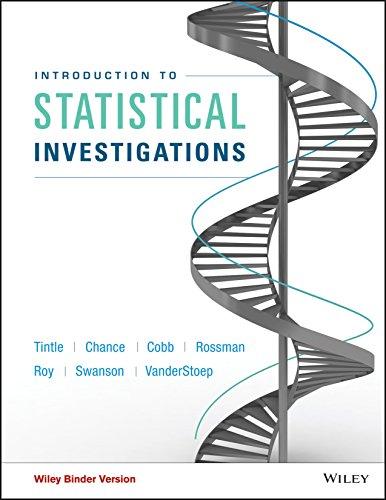A reader wrote in to the Ask Marilyn column in Parade magazine to say that his grandfather
Question:
A reader wrote in to the “Ask Marilyn” column in Parade magazine to say that his grandfather told him that in three-fourths of all baseball games, the winning team scores more runs in one inning than the losing team scores in the entire game. (This phenomenon is known as a “big bang.”) Marilyn responded that this proportion seemed to be too high to be believable. To investigate this claim, an instructor examined the 45 MLB games played on September 17–19, 2010.
a. Was this a random sample of all MLB games played in the 2010 season? Explain briefly.
b. Restate the grandfather’s assertion as a null hypothesis and Marilyn’s response as an alternative hypothesis, in both symbols and in words. The instructor found that 21 of the 45 games played on those dates contained a big bang.
c. Calculate the sample proportion of games that had a big bang and denote it with the appropriate symbol.
d. Assume (for now) that the grandfather’s claim is true and use the One Proportion applet to simulate 1,000 samples of 45 games per sample. Describe how to calculate the approximate p-value from this simulation and report its value.
e. Would you conclude that the sample data provide strong evidence to support Marilyn’s contention that the proportion cited by the grandfather is too high to be the actual value? Explain your reasoning, as if writing to the grandfather, who has never taken a statistics course.
Step by Step Answer:

Introduction To Statistical Investigations
ISBN: 9781118172148
1st Edition
Authors: Beth L.Chance, George W.Cobb, Allan J.Rossman Nathan Tintle, Todd Swanson Soma Roy





